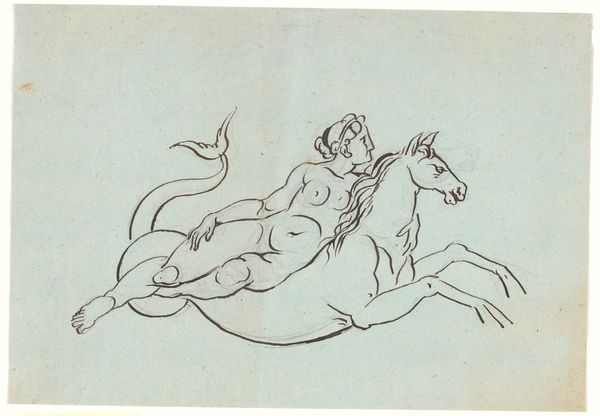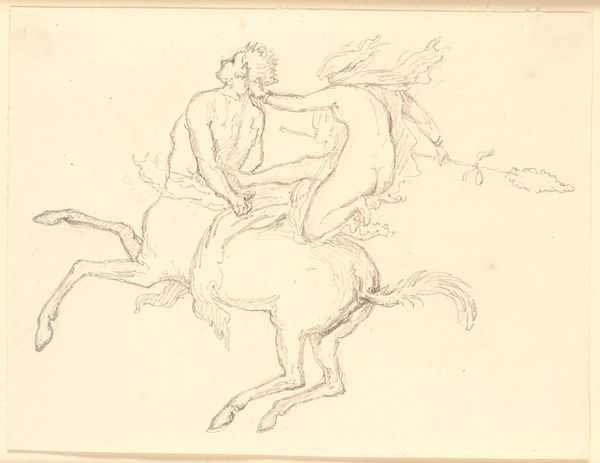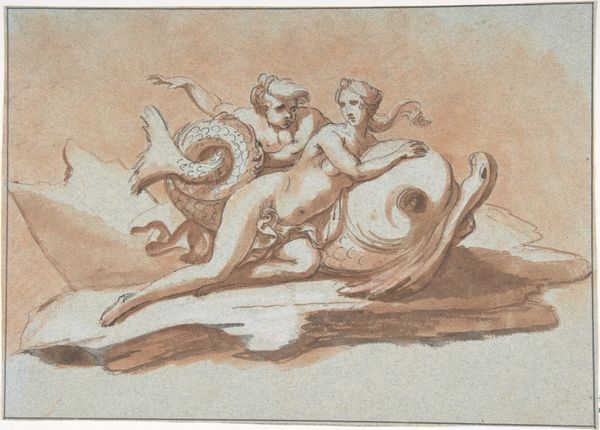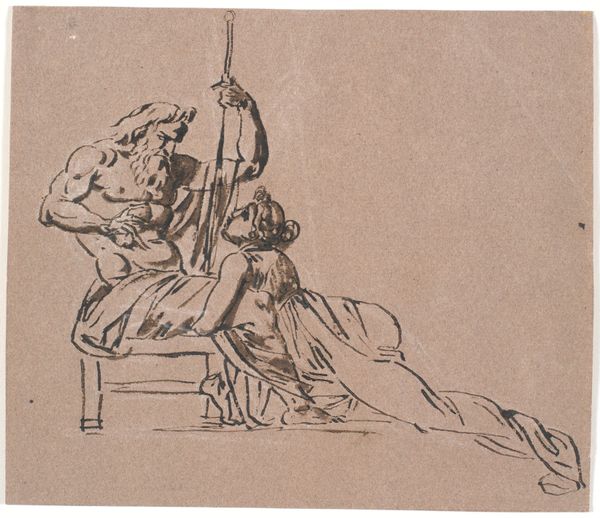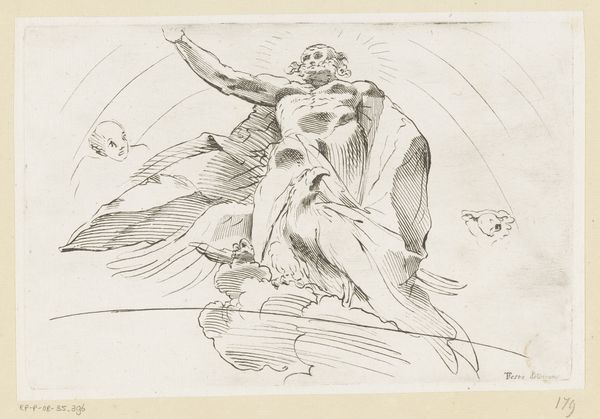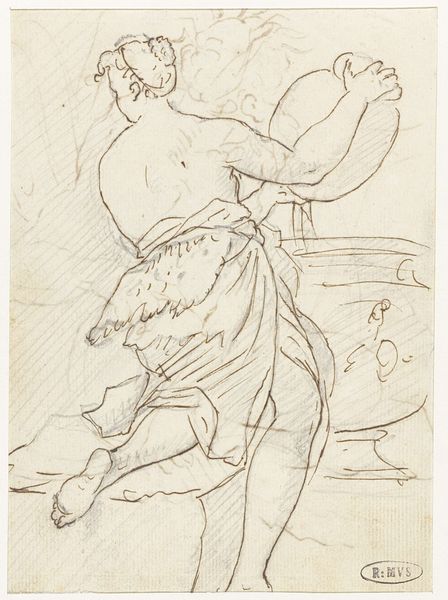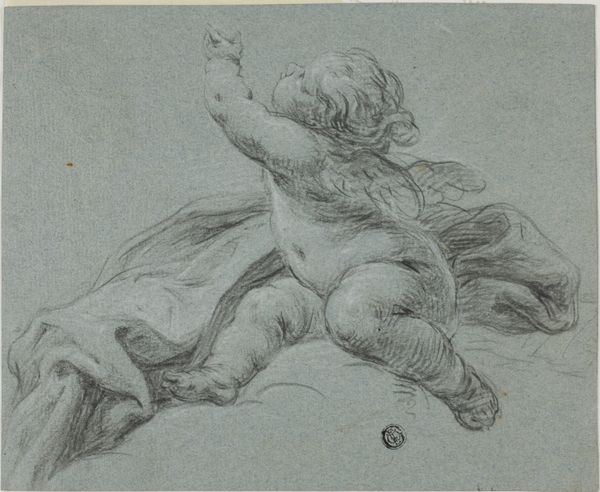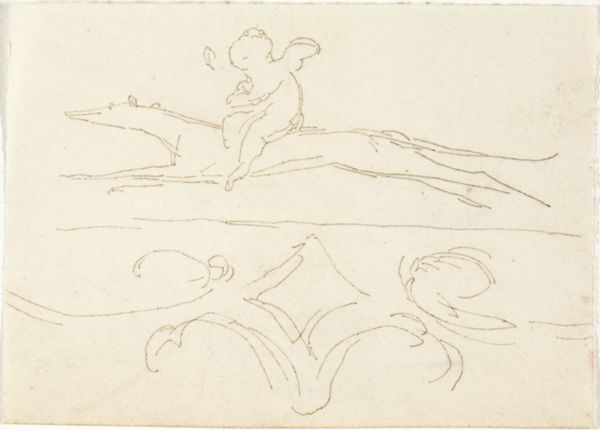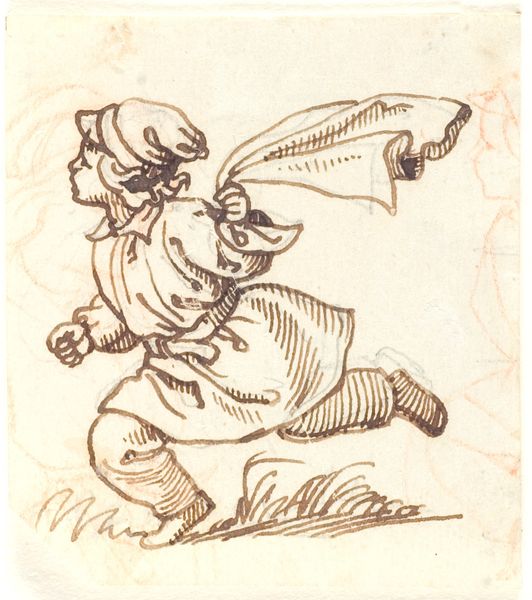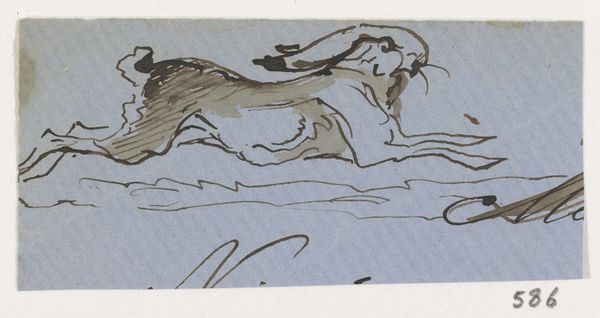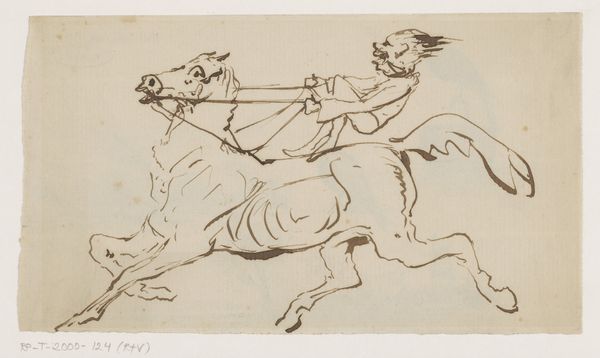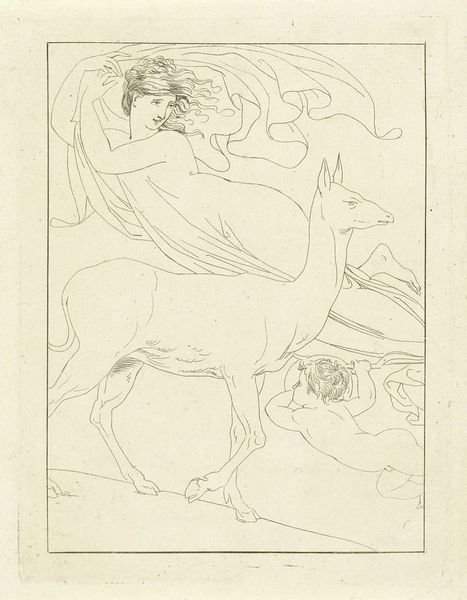
En nøgen mand liggende henslængt på en ged med fiskehale 1743 - 1809
0:00
0:00
Dimensions: 155 mm (height) x 280 mm (width) (bladmaal)
Curator: Here we have "En nøgen mand liggende henslængt på en ged med fiskehale" by Nicolai Abildgaard, dating roughly from 1743 to 1809. It's a drawing currently held at the SMK, the National Gallery of Denmark. Editor: My first impression is that of an awkward calm. The muted palette and the relaxed pose of the man are at odds with the bizarre creature he's lounging on—a goat with a fish tail! Curator: Indeed! Abildgaard was a key figure in the Danish Golden Age, deeply influenced by classical antiquity and the burgeoning Romantic movement. This drawing exemplifies his interest in historical painting, academic art, and the male nude, all filtered through a distinct Romantic lens. Consider the socio-political context; he's producing work during a period of immense change in Europe. Editor: I'm drawn to the linearity, the starkness of the lines defining the figures against the background. It highlights the almost sculptural quality of the man’s body, and creates a certain detachment. Do we know the process behind creating the drawing? Curator: It’s likely a preparatory sketch. Understanding the means of production is vital. Drawings such as this were not considered finished products, they were means to an end. Abildgaard was very interested in mythologies, like the tale of Europa and the Bull, and this particular combination might also reference a figure connected with power in the sea or fresh waters. Also it shows how academic ideals of male form were rendered available and made accessible to aspiring students and other professional artist members. Editor: So, for you, the impact rests on its utility as a stepping stone in Abildgaard’s artistic journey, showing also the accessibility of such ideals for aspiring art students? But look at how the composition directs our eye. The curve of the fish tail leads up to the reclining figure. Then, the subject’s gaze follows the lines of the goat's body and head. There's a balance in how he uses line and form. Curator: Precisely, the drawing reflects labor and training, and Abildgaard's consumption and manipulation of these available concepts. It reminds us of the human element embedded within mythological symbolism. Editor: And it shows a unique approach, bringing academic structure with emotional nuance. It creates a stillness and draws you closer. Curator: Indeed, whether a cog in a workshop process or a sublime depiction of human drama, it shows how social relations in artwork like this intersect.
Comments
No comments
Be the first to comment and join the conversation on the ultimate creative platform.
